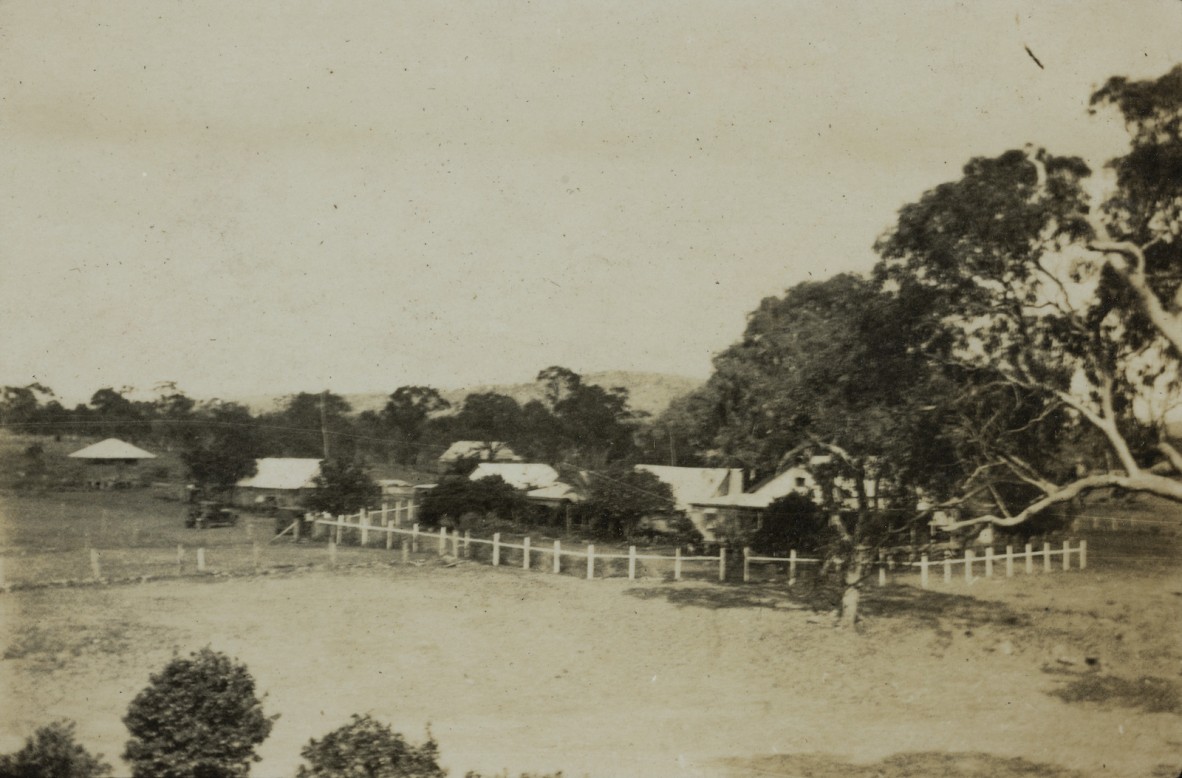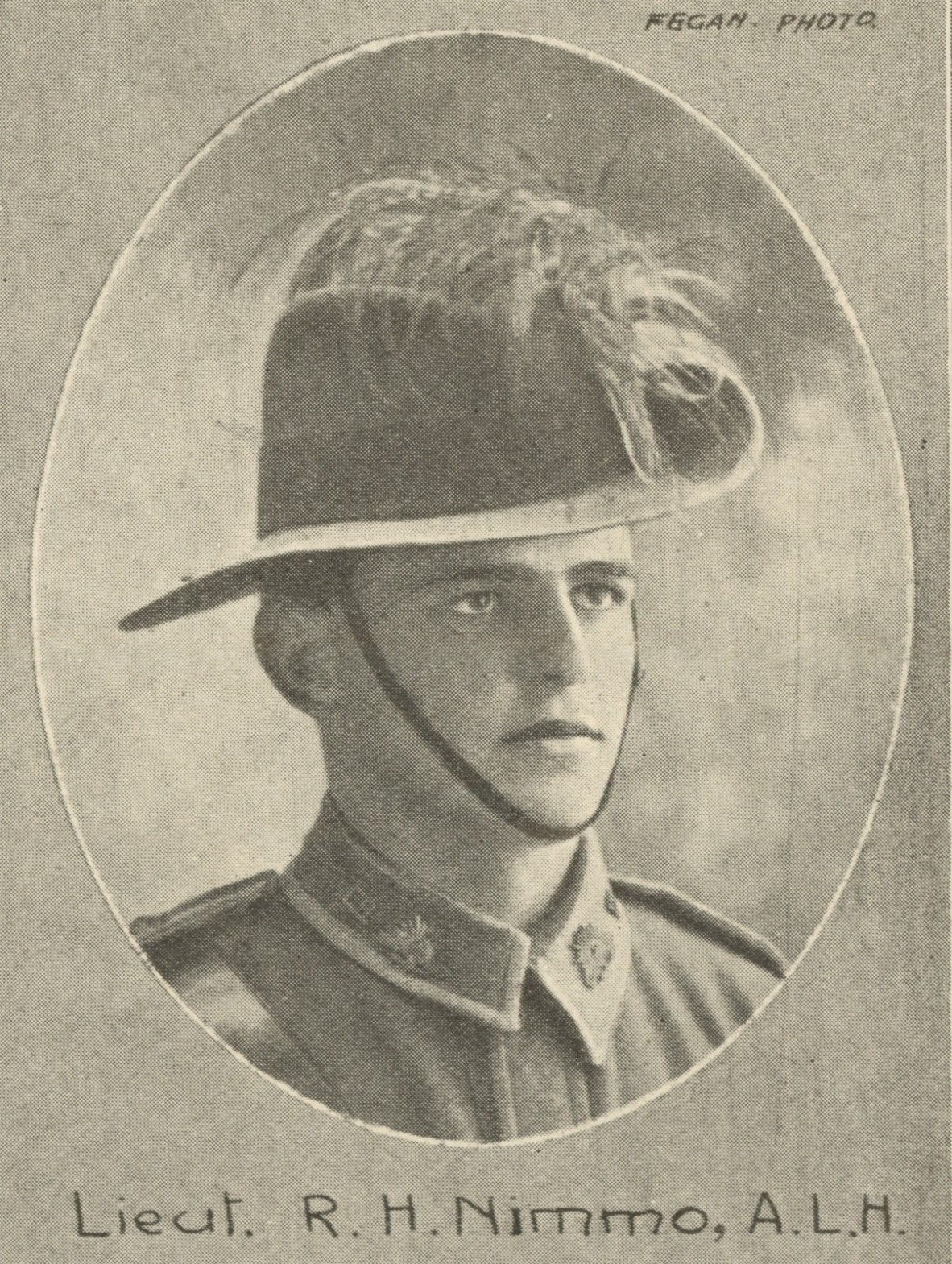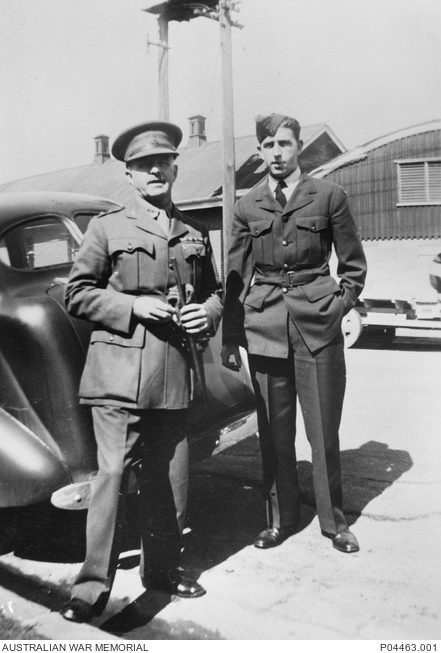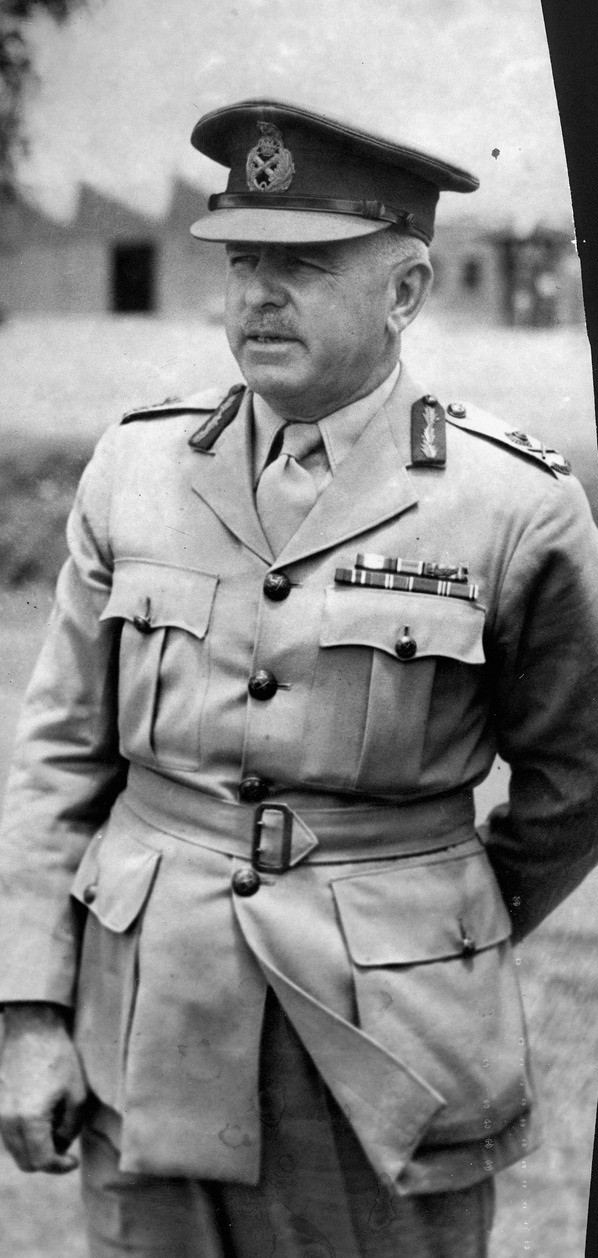Lieutenant General Robert Harold Nimmo: A life of service
By Alaine Baldwin, Visitor Services Assistant, Anzac Square Memorial Galleries | 26 May 2023
Lieutenant General Robert Harold Nimmo was the first Australian to command a multinational peacekeeping mission, and the longest serving UN commander. From the age of 18 when he entered the Royal Military College at Duntroon for officer training until his death at 72 in Rawalpinda, Pakistan while commanding the United Nations Military Observers in Kashmir, Lt General Robert Harold Nimmo was in service.
Born on 22 November 1893 at Oak Park Station, the northwest Queensland cattle property his family would own for almost a century, Robert Nimmo was the fifth of nine children born to Scottish grazier, James Russel Nimmo and his wife Mary Anne Nimmo. Due to James's ill health, the family moved to Southport when Robert was about six. He and his brothers attended Southport School, which had opened in 1901. An excellent student both academically and on the sporting field, Robert attended the school from 1904 to 1911. At his graduation, Sir Harry Chauvel (later to be General Henry Chauvel) suggested Robert might like to pursue a military career as the Royal Military College (RMC) Duntroon had opened in June 1911.

Buildings on the Nimmo family’s Oak Park Station, Mackenzie River, Queensland 1910-1935. Reverend Herbert Norton Papers, State Library of Queensland. Image: 30719-0003-0008
In 1912, Nimmo sat the entrance exam and joined the second class of cadets to begin the four-year officer’s course at RMC. However, with the threat of war looming, the course was accelerated and Nimmo’s class graduated 14 months early. He was awarded the Sword of Honour for the cadet who displayed “exemplary conduct and performance of duty” during the course. His first posting was as a Lieutenant to the 5th Light Horse Regiment in Brisbane, which left for Egypt before the end of 1914. After training in Egypt, the regiment was sent across to Gallipoli 3 weeks after the landing. Lt Nimmo would see 4 months of action there before being evacuated due to enteric fever. After treatment in London, he returned to Egypt in May 1916 and finally rejoined his regiment, as a Captain, in July. They were part of the Light Horse campaign against the Turkish in the Sinai Desert and Palestine. After his promotion to Major in July 1917, he commanded B Squadron 5th LH, from the Battle of Beersheba through to the Trans-Jordan raids. He would survive the war without being wounded, though he was hospitalised for several weeks with malaria prior to the armistice being signed. A well-liked and competent officer, he was ‘Mentioned in Despatches’ by the Commander-in-Chief, Lord Allenby for his services from 16 March to 18 September 1918 and his commanding officer 5th LH Lt Colonel Cameron noted he was ‘a most gallant and able leader.’

Lieutenant R.H. Nimmo, Australian Light Horse, P24 of the Queensland Pictorial, 30 January 1915. John Oxley Library, State Library of Queensland. Image: 702692-19150130-s0024-0004
Nimmo’s AIF appointment was terminated on 19 June 1919 when he transferred to the Permanent Military Forces as part of the Australian Staff Corps. During the years between the World Wars, he filled various roles, including as an instructor at Duntroon from 1920-1924; and staff appointments with the Light Horse in Victoria for 12 years. In 1937, he was sent to England to attend training courses for senior officers, but was back in Australia by the outbreak of WWII. He was promoted to Lt Colonel and worked as a General Staff Officer in Brisbane until 1940, when he was promoted to Colonel and posted as 2IC of the 1st Armoured Brigade, which was based in NSW and was being trained for deployment to the Middle East. However, when Japan entered the war, the Brigade was held in Australia. Promotions were coming quickly and Nimmo was promoted to Brigadier and given command of the 4th Cavalry Brigade, whose role was to defend the NSW coast south of Port Kembla. He had several more commands in Australia with 1st Motor Brigade in Queensland, 1st Armoured Brigade in Western Australia and a General Staff Post administering command of Northern Territory Force. In March 1945, he was sent overseas to Bougainville to command the island base of Torokina. By the end of the war, he was in Lae in a senior administration role at 1st Army Headquarters.
During the war he suffered terrible personal loss. Joan, his wife of almost 20 years and the mother of his 2 children James and Anne, fell from the cliffs at Rose Bay Heights in Sydney on Tuesday evening 12 March 1940. Her body wasn’t found until Friday 15 March. She was 43 years old. Nimmo was encamped near Armidale with the 1st Cavalry Division when he heard she was missing. In March 1941, his 19-year-old son James joined the Airforce in Brisbane. After completing his training in Australia, he joined a Squadron in England flying Lancaster Bomber aircraft. In January 1944, he and his crew were transferred to 103 Squadron, RAF. After completing a mission laying mines along the German and Polish shore on the Baltic Sea, on 10 April 1944, he was shot down over Denmark during the return flight. The two gunners bailed out and survived but James and the other four crew members died. He was only 21.

Portrait of Brigadier Robert Harold Nimmo (left) and Pilot Officer James Harold Nimmo, 1942. Australian War Memorial, P04463.001
Despite these tragedies, Nimmo continued to serve. After WWII, he would organise and command the Australian component of the British Commonwealth Occupation Force, taking the 34th Infantry Brigade to Japan. On his return to Australia in 1946, he was promoted to Major General and was made General Officer Commanding (GOC) Northern Command. After turning 57, the retirement age for his rank, on 22 November 1950 he completed his service with the Australian Military Forces, having served as a commissioned officer for over 35 years.

Major General Robert Harold Nimmo, GOC Northern Command, 1949. John Oxley Library, State Library of Queensland. Negative: 195870
In 1947, India had been given its independence and partitioned into India and Pakistan. Kashmir State, though mainly Muslim, had opted to join India, which led to war in this area. The United Nations was drawn in to set up a body of military observers to monitor the 800km long front line that was drawn through Kashmir when it was split between India and Pakistan. When the commander of the United Nations Military Observer Group in India and Pakistan (UNMOGIP) was killed in a plane crash in 1950, it was decided an Australian should replace him as they would be well suited to supervise a dispute between two Commonwealth countries. Major General Nimmo was appointed Chief Military Observer (CMO) in October 1950, and he remained in command until his death on 4 January 1966. His second wife Mary, who he married in 1942, and their two young children Catherine (5) and Robert (3), spent some time with him during the posting.
In November 1954, at the suggestion of the UN Officials, he was granted the Honorary rank of Lt General. Although 60 was the official retirement age for his post, extensions continued to be granted by the UN Secretary General. He never asked to leave Kashmir and the UN never sought to replace him due to his diplomatic skills and professional expertise. When he died, he had commanded the mission for 15 years and 2 months, so not only was he the first Australian to command a multinational peacekeeping mission, but it remains the longest ever UN command. In 1964, the UN Secretariat reported that Nimmo was "by far the most successful United Nations observer ever."
On 3 February 1966 Lt General Nimmo’s body was escorted through Brisbane by 500 soldiers before his funeral service at St John’s Cathedral. He was buried in the Anzac section of the Mt Gravatt Cemetery. His service was done.
References
Londey, Peter (30 March 2021).'Robert Nimmo’ Australian War Memorial.
Magro, John (12 December 2007). ‘The Longest Command – The Life and Times of Lieutenant General Robert Harold Nimmo: What he can teach the modern-day military observer.
1940 'Woman Fell to Death Over Cliff', Daily News, Friday 15 March, p. 5. viewed 17 March 2023, https://trove.nla.gov.au/newspaper/article/236362896?searchTerm=Robert%20Harold%20Nimmo%20wife
Comments
Your email address will not be published.
We welcome relevant, respectful comments.